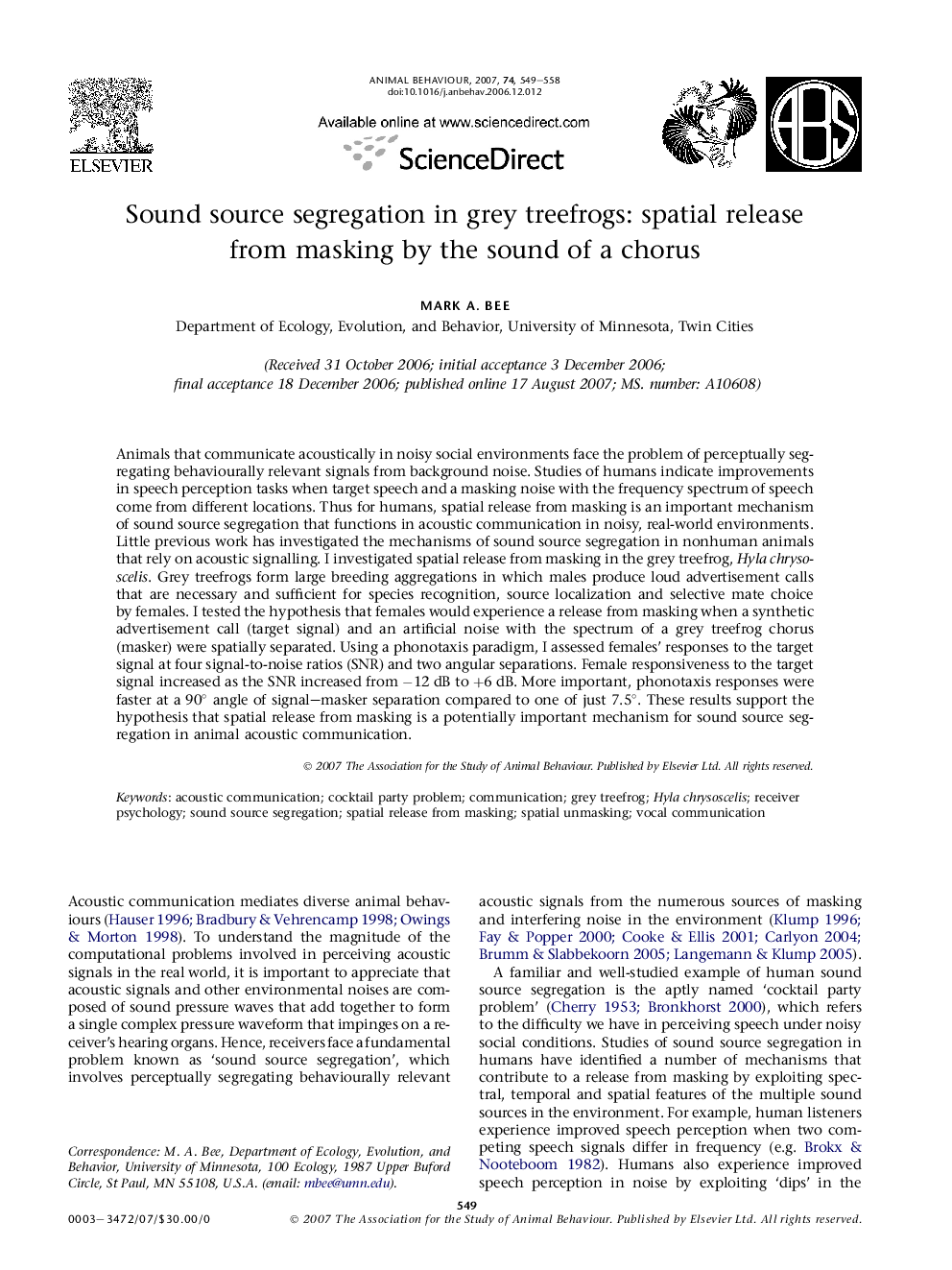| Article ID | Journal | Published Year | Pages | File Type |
|---|---|---|---|---|
| 2418081 | Animal Behaviour | 2007 | 10 Pages |
Animals that communicate acoustically in noisy social environments face the problem of perceptually segregating behaviourally relevant signals from background noise. Studies of humans indicate improvements in speech perception tasks when target speech and a masking noise with the frequency spectrum of speech come from different locations. Thus for humans, spatial release from masking is an important mechanism of sound source segregation that functions in acoustic communication in noisy, real-world environments. Little previous work has investigated the mechanisms of sound source segregation in nonhuman animals that rely on acoustic signalling. I investigated spatial release from masking in the grey treefrog, Hyla chrysoscelis. Grey treefrogs form large breeding aggregations in which males produce loud advertisement calls that are necessary and sufficient for species recognition, source localization and selective mate choice by females. I tested the hypothesis that females would experience a release from masking when a synthetic advertisement call (target signal) and an artificial noise with the spectrum of a grey treefrog chorus (masker) were spatially separated. Using a phonotaxis paradigm, I assessed females' responses to the target signal at four signal-to-noise ratios (SNR) and two angular separations. Female responsiveness to the target signal increased as the SNR increased from −12 dB to +6 dB. More important, phonotaxis responses were faster at a 90° angle of signal–masker separation compared to one of just 7.5°. These results support the hypothesis that spatial release from masking is a potentially important mechanism for sound source segregation in animal acoustic communication.
